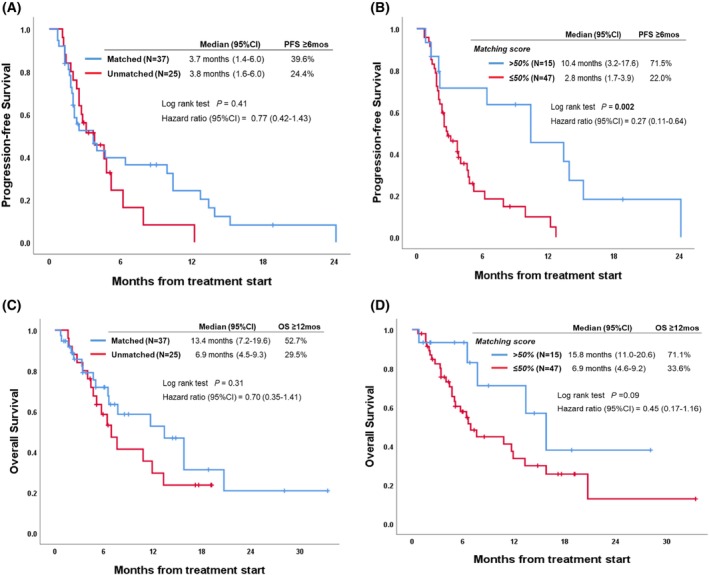Fig. 2.

Progression‐free survival and overall survival depending on matched vs. unmatched therapy and the Matching Score of treatment (N = 62). (A) Progression‐free survival depending on whether patients received matched vs. unmatched therapy (N = 62). Patients whose tumour therapy matched to their alterations vs. those whose tumours were unmatched therapeutically to their alterations showed no difference in progression‐free survival (matched vs. unmatched: 3.7 vs. 3.8 months, P = 0.41, univariate). (B) Progression‐free survival depending on the Matching Score of treatment (see Materials and methods for definition of Matching Score) (N = 62). Patients who received therapy with high degree of matching (Matching Score > 50%) had significantly better progression‐free survival when compared to patients treated with low degree of matching (Matching Score ≤ 50%; median progression‐free survival: 10.4 vs. 2.8 months, P = 0.002, univariate). (C) Overall survival depending on whether patients received matched vs. unmatched therapy (N = 62). Patients whose tumour therapy matched to their alterations vs. those whose tumours were unmatched therapeutically to their alterations showed no difference in overall survival (matched vs. unmatched: 13.4 vs. 6.9 months, P = 0.31, univariate). (D) Overall survival depending on the Matching Score of treatment (see Materials and methods for definition of Matching Score; N = 62). Patients who received therapy with high degree of matching (Matching Score > 50%) had trend toward better overall survival when compared to patients treated with low degree of matching (Matching Score ≤ 50%; median overall survival: 15.8 vs. 6.9 months, P = 0.09, univariate).
